Affiliate disclosure: This post may contain affiliate links. Please see our Privacy Policy.
Lemon balm is an easy to grow perennial herb in the mint family that loves to grow in cool weather. It’s incredibly prolific, and tasty too!

Lemon balm – Melissa Officinalis – originates in Europe and Asia. Now that it grows throughout the United States, it is found most often in USDA zones 4-9. The plant is cold hardy down to -20℉, but it doesn’t enjoy hot temperatures. It’ll typically grow quickly in the spring, and then turn bitter and go to seed as temperatures warm up in mid-summer.
The plant typically reaches up to 12-24 inches tall and wide, growing in large clumps of branched stems and clusters of small, white flowers at the top. It’s easy to mistake lemon balm for mint, but remember, they’re in the same family.
Lemon balm blooms throughout the summer and into the fall. The plant has lemon-scented, oval, serrated leaves that measure up to three inches long. It’s prized for its citrusy-mint flavor in recipes.
Lemon balm is a favorite plant for pollinators, especially honeybees. A small patch of this herb encourages bees to return year after year. No matter if you have bees or want to attract more to visit, planting lemon balm is sure to make them stop.
It’s easy to grow from seed, provided you have a few Lemon Balm Seed Packets.
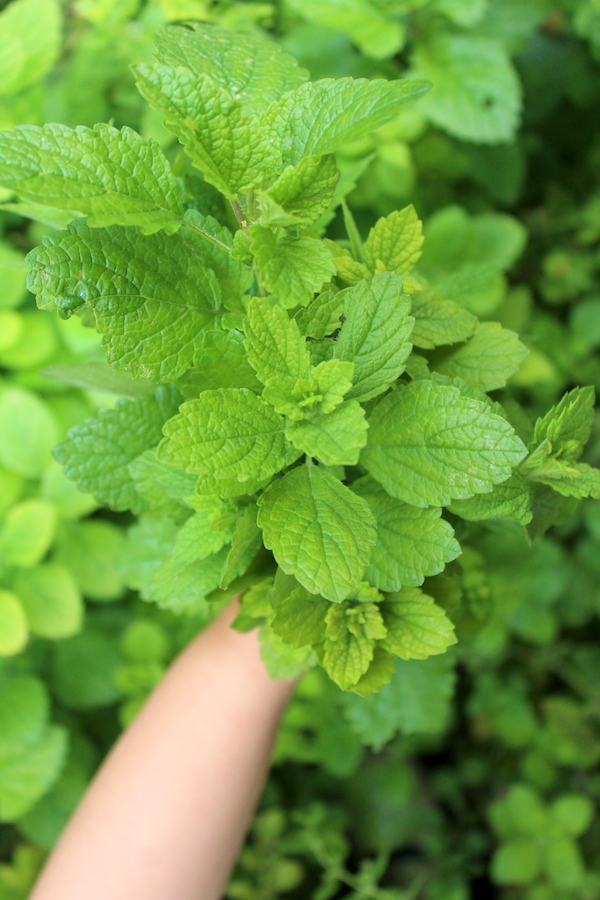
Growing Lemon Balm in Your Garden
The first thing that you need to do is find the perfect spot to grow lemon balm. The plant grows best in full sunlight, but if you don’t have an area with 6-8 hours of sun, look for a partial shade location. It also needs to be a well-drained location.
After that, it’s time to amend the soil. Lemon balm isn’t a finicky plant; it grows well in all soil types but prefers not to grow in soggy, wet soil. Keep the pH range between 6.7 and 7.3.
Use a soil test to determine the pH range of your soil and amend it appropriately. Always add several inches of compost to the ground and mix it in well before planting for all the nutrients your plant needs to grow.
Planting Lemon Balm
There are three ways to plant lemon balm: starting seeds indoors, sowing seeds directly outside, or propagating from a cutting.
If you want to start the seeds indoors, plant them into containers eight weeks before the final spring frost. Unlike other plants like tomatoes, these seeds need light to germinate, so don’t cover them or only use a fine layer of soil on top of the seeds. It takes around 14 days for germination to happen, so be patient.
Sowing seeds directly outside is easy too. Sow the seeds around the date of the last spring frost. The seeds are slow to germinate; sow them shallow, planting only 1/8 to 1/4 inch deep. Remember, they need light to germinate, and sunlight just barely makes it through the top layer of the soil.
The soil must stay moist until the seed germinates. Consider sowing the seeds in the late summer or fall, or use root division to plant at any time during the growing season.
The last way to grow lemon balm is to take a cutting from the plant in the spring or the fall. All you need is to remove a few inches from the soft tips of an established plant.
If you take a cutting in the spring, it should be taken a few inches below new growth tips. Taking a cutting in the fall is different; it needs to be taken from the stem closer to the crown’s base that hasn’t flowered.
After you take a cutting, remove two-thirds of the leaves and pinch the tips. Dip the stems in honey or rooting hormone and put them into a sterile planting mix combined with sand. Water immediately and keep in an area out of direct sunlight. Expect roots to develop in 3-4 weeks.
When it’s time to plant lemon balm seedlings outside (after the last frost), space them 18 inches apart. Dig a slightly bigger hole than the root ball, gently spread the roots with your hands, and place the plant into the hole. Fill it with soil and water deeply.
If you planted seeds into the ground, you need to thin the seedlings 8 inches apart at first and then later 18 inches apart.
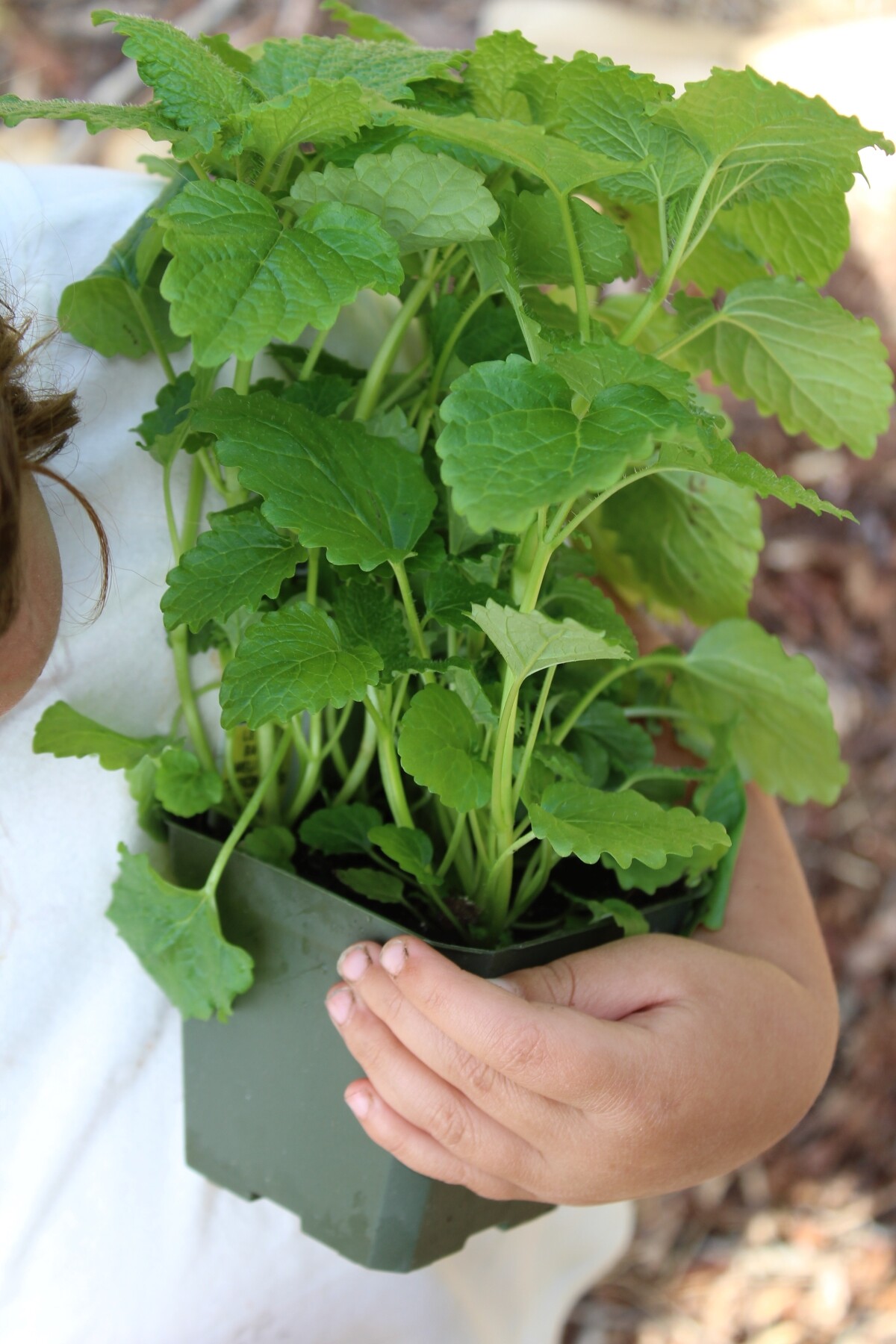
Caring for Lemon Balm
Lemon balm is so easy; these plants don’t have any complicated requirements to follow.
The most important part of caring for lemon balm plants is watering regularly; they need consistent, even watering. Lemon balm thrives in slightly moist soil, but once established as a perennial and growing well every year, the plants handle drought conditions.
Don’t worry about fertilizing throughout the growing season — instead, side-dress the plants with aged compost throughout the season to boost nutrients.
The hardest part of growing lemon balm is that it spreads quickly; lemon balm can actually be a bit invasive as it spreads by underground roots. That said, it’s not nearly as bad as true mint, and I haven’t had any trouble keeping mine in check.
Still, many gardeners prefer to grow this plant in containers to keep the roots in one place, but if you don’t want to do that, you need to cut the plant back by half after flowering to maintain a compact shape.
It’s safe to prune or thin out up to a third of the plant at one time. Remove any brown, damaged leaves, and remove stems that are dead as well.
Deadheading is a must for lemon balm plants. The dead flower heads contain seeds, and if they drop to the ground, the plant self-sows and continues to spread throughout your garden.
In the winter, cut the lemon balm back, leaving only two inches of the stem. Don’t be alarmed; the plant grows back rapidly in the spring.
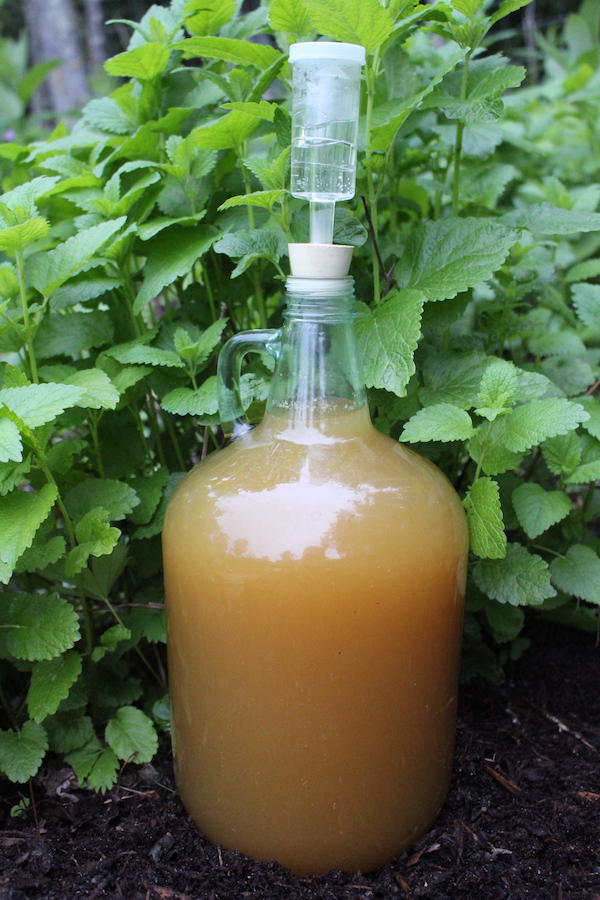
Harvesting Lemon Balm
Harvesting lemon balm happens anytime during the growing season. Pinch off the leaves and spring as you need them throughout the year.
If you want the strongest flavor, harvest the lower, older leaves; the aroma is the strongest. Harvest leaves in the summer for drying, starting when the lower leaves begin to turn yellow. Then, midseason, cut the plant back by half and wait another month for brand new growth.
Older growth in mid-summer can get tough and bitter, so if you’d like to keep harvesting through the hottest part of the summer be sure to cut part of the plant to the ground so it comes back tender and mild.
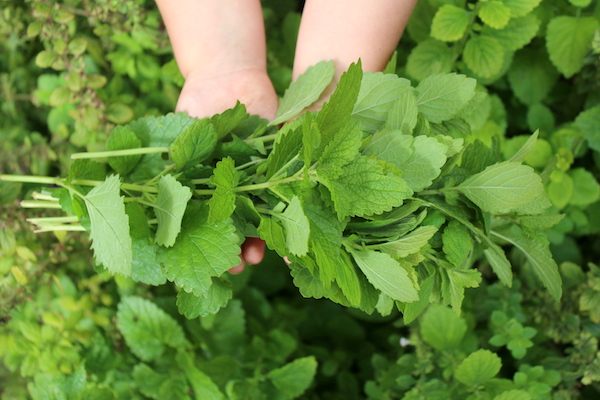
Storing Lemon Balm
The most common way to store lemon balm is by drying. Remove the leaves from the stems and place them on a tray in a warm, shady place. Harvesting mature leaves works best for drying.
You can also dry lemon balm in dehydrators. Dehydrate them around 120℉, but remember that drying leaves cost a loss of flavor.
After drying, store the dried leaves in an airtight container for six months.
Medicinal Benefits of Lemon Balm
This uplifting herb has many medicinal benefits, so if you’re interested in growing an herb garden for herbal remedies, lemon balm is a must-grow plant. Some of the problems that it treats include:
- Reducing stress and anxiety
- Restlessness
- Insomnia
- Indigestion
- Gas
- Bloating
Herbalists recommend using lemon balm in several ways. It makes a wonderful herbal tea or tincture. It also makes a lovely infused oil that can be made into salves and lotions.
I have a list of more than 30 ways to use lemon balm, but here are a few to get you started:
- Lemon Balm Mead (Honey Wine)
- Honey Lemon Balm Spritzer
- Lemon Balm Bug Spray
- Lemon Balm Tincture
- Lemon Balm Tea



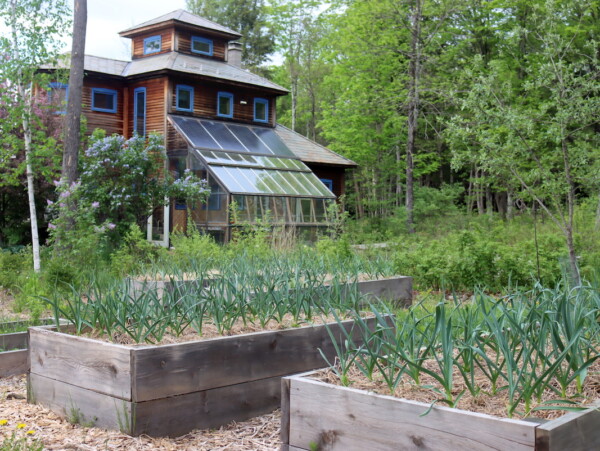
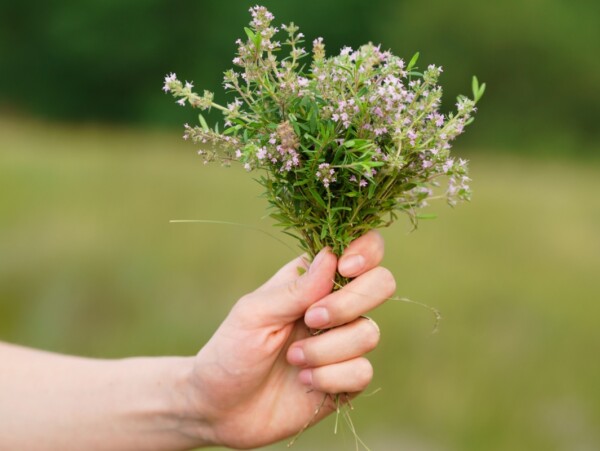
Good article; thank you. I’d like to print it out to keep in my gardening files. Having trouble doing the printing. The article is broken up w lots of other info between paragraphs. Any suggestions? Tks much!!!
The best way to print from this page to remove all of that is to copy and paste the text into a word document and print it that way.